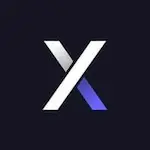Last updated on September 9, 2025


⚠️ We look for what’s best for you.
₿ Getting into crypto? With eToro you can start in minutes: buy/sell top coins, set recurring buys, track markets, and use Social/CopyTrader features.
United States
Europe
Latin America
India
China
Canada
United Kingdom
United States
Europe
Latin America
India
China
Canada
United Kingdom
Thinking about starting with crypto? This is for you.
In select regions, eToro offers a $10 welcome bonus when you open an account today.*
🎯 An account built to help you start with crypto—without the hassle.
➕ Buy and sell top cryptocurrencies in minutes
➕ Recurring buys, price alerts, and advanced charts
➕ Social/CopyTrader™ to follow experienced investors
➕ One of the largest and most trusted platforms worldwide

Limited-time promotion — still available.
*Offer subject to terms, eligibility and regional availability. Don’t invest unless you’re prepared to lose all the money you invest.

📈 Millions already choose eToro for crypto investing online
₿ Buy and sell top coins in minutes — recurring buys, price alerts, advanced charts
✅ See why it ranks #1 in our head-to-head comparisons
Cryptoassets are highly volatile and unregulated in some regions. No consumer protection. Tax may apply. Don’t invest unless you’re prepared to lose all the money you invest.